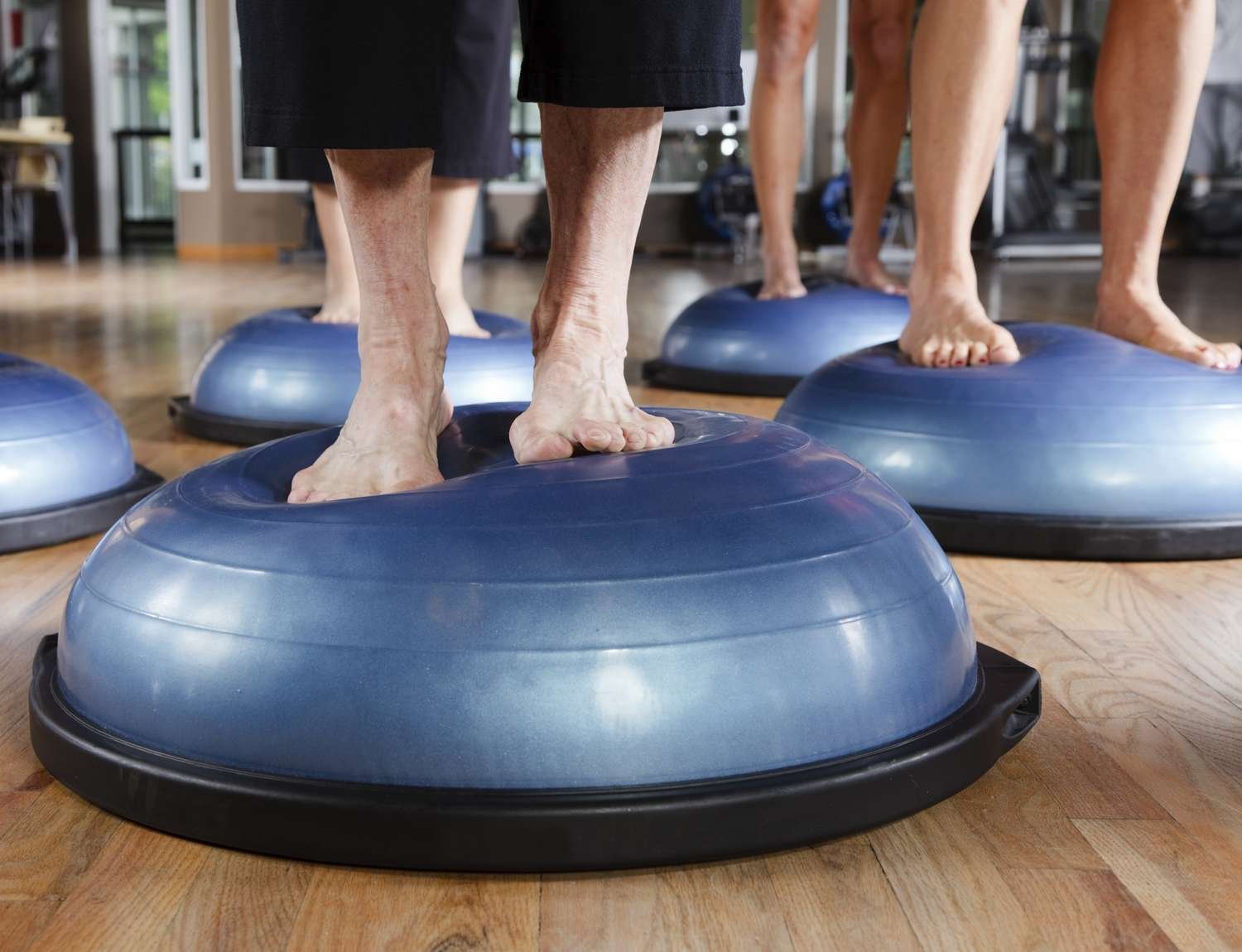Benefits of Balance Training
Balance is defined as the body's ability to maintain its center of mass over the base of support. More importantly, it is the body's ability to do this during movement. In a nutshell, it is a fundamental component of any movement we perform; being able to maintain balance is crucial to performing everyday activities: Athletes find it can make them more powerful, seniors use it to prevent injuries from falls and maintain independence, and fitness lovers know it helps improve workouts and everyday life. In fact, just moving around efficiently in life requires healthy postural alignment and good balance.
Researchers have found that balance begins to decline in midlife, starting at about age 50. In one recent study, adults in their 30s and 40s could stand on one foot for a minute or more. At age 50, the time decreased to 45 seconds. At 70, study participants managed 28 seconds. With each passing year, your body becomes less efficient at pumping blood through your veins. If you stand up too quickly or make a sudden movement, it causes your blood pressure to drop. If this happens, you may lose your balance for a moment and recover quickly. In addition, the way you walk as you age changes, so not having a proper stride while walking can cause you to lose your balance.
Other reasons for loss of balance include, but are not limited to: inner ear problems, foot pain, history of lower limb injury such as an ankle sprain, vision problems, loss of depth perception, or side effects of medications. But no matter the cause, there are remedies, including balance training.
Benefits of Balance Training
Maintaining balance is a complex task that requires coordination from your muscles, tendons, bones, eyes, ears, and brain. If even one of these systems become weakened, others may overcompensate and our balance is affected. Luckily, there are exercises you can do to maintain functional balance, and here are a few reasons why it is so important to incorporate them into your exercise routine:
Body awareness. Balance training helps you understand where your body is in space and how it moves. It helps to know how far to reach for an item on a high shelf, or how to move to avoid bumping into someone.
Reaction time and fall prevention. If you step off a curb and stumble, your body needs to react immediately to rebalance and keep you from falling. Balance training helps your body respond more quickly to these immediate demands and avoid injuries from a fall.
Increased muscular strength and joint support. When you strengthen the muscles used for balance, you help take the stress off of painful joints.
Coordination. Your brain sends signals to your muscles to coordinate movement. Since maintaining balance requires many muscles to work together, balance training improves your mind-body coordination. Staying physically active helps keep you mentally sharp at the same time!
Maximize your workouts. Sprinkling balance training in between more challenging strength training exercises lets you use your workout time more effectively.
A Few Balance Training Tools
Bosu Ball
Not only is a Bosu Ball a balance aid, helping users coordinate muscles and nerves for unstable conditions that you experience in everyday life, but it also assists in a number of other types of training, such as stretching, rehabilitation, and strength training. 'Bosu' stands for ‘both sides up,’ because it can be used with the flat base on the floor with the dome side facing up, or as a wobble board with the dome side facing down. It serves as a more practical and useful version of the traditional stability ball.
Airex Balance Beam
Due to its dimensions, the entire trunk musculature can be trained in the abdominal and supine position. It’s also ideal for supporting and intensifying yoga and pilates exercises.
Balance Board
The ability to choose what level of motion you are ready for is what makes balance boards so valuable. To get out in front of injuries, incorporating a balance board is designed to work muscles that surround your ankles, knees, and even shoulders.
Yoga
Balance training can also be done right on the floor without the above mentioned tools. In fact, yoga has proved to be one of the best ways to improve balance, as it does an excellent job of strengthening and stretching the muscles that are essential for balance. Warrior III pose (virabhadrasana), Tree pose (vrikshasana), Chair pose (Utkatasana), Mountain pose (Tadasana), and Downward Dog (Adho Mukha Shvanasana) are all great yoga poses that will help rebuild your balance.
If you want to learn how to use the balance training equipment or learn some floor/yoga balance training alternatives, click the button below to sign up for a complimentary assessment with a Success Studio personal trainer. While you’re at it, ask about joining a yoga class led by our Success Studio seasoned yoga instructor and personal trainer, Rachel Musser.




